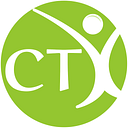We generally have a misconception that physiotherapy is only useful for motor function, joint mobility, and muscle injury recovery. While it certainly plays a significant role in those areas, there’s a whole branch of physiotherapy that focuses on treating neurological conditions. This specialized area is called neurological physiotherapy.
Neurological physiotherapy addresses the challenges faced by individuals who suffer from impairment caused by neurological conditions. This could include anything from difficulty with movement, balance, or coordination, to more serious symptoms like paralysis or spasticity. By using targeted exercises and techniques, neurological physiotherapists work to help patients regain as much independence and function as possible.
How Neurological Physiotherapy Works
Before diving into the five quick tips about neurological physiotherapy, it’s important to understand how this type of therapy differs from standard physiotherapy and how it works to treat neurological conditions.
Unlike regular physiotherapy, which mostly focuses on treating injuries to muscles, bones, or joints, neurological physiotherapy specifically addresses issues that arise due to damage to the nervous system. This includes the brain, spinal cord, and peripheral nerves. Conditions like strokes, traumatic brain injuries, multiple sclerosis, and Parkinson’s disease often lead to mobility issues, and this is where neurological physiotherapy steps in.
Through carefully planned rehabilitation programs, a neurological physiotherapist aims to stimulate the brain’s neuroplasticity — its ability to reorganize itself and form new neural connections. This helps patients recover lost abilities, relearn everyday tasks, and regain strength and coordination.
Conditions Treated Under Neurological Physiotherapy
To fully grasp the scope of neurological physiotherapy, it’s important to know the range of conditions it addresses. Patients with conditions like stroke, brain injury, spinal cord injury, multiple sclerosis, Parkinson’s disease, cerebral palsy, and even some cases of vertigo benefit from this specialized therapy.
Each condition affects the body differently. For example, someone recovering from a stroke may have difficulty walking, while a person with Parkinson’s disease might struggle with tremors and balance. Neurological physiotherapy tailors treatment plans to the specific needs of each patient, focusing on what will help them regain function and improve their quality of life.
Now that we have a clearer understanding of how neurological physiotherapy works, let’s move on to the five quick tips that can help anyone considering this therapy.
5 Tips About Neurological Physiotherapy
Tip 1: Early Intervention is Key
The sooner you begin neurological physiotherapy after an injury or diagnosis, the better your chances of recovery. Early intervention allows therapists to start working on regaining lost function before muscles become too weak or stiff. Whether you’re dealing with the aftermath of a stroke or a brain injury, starting therapy early gives your body the best chance to recover more effectively.
Tip 2: Set Realistic Goals
It’s essential to set realistic and achievable goals when starting neurological physiotherapy. Your physiotherapist will help you break down your recovery into smaller, manageable milestones. This could be something like walking unaided for a short distance, improving balance, or being able to perform daily tasks independently. Celebrating these small wins keeps you motivated and helps measure progress over time.
Tip 3: Practice Repetitive Movements
Repetition is at the heart of neurological physiotherapy. Repeatedly practicing movements helps retrain the brain and body to work together again. This process is called neuroplasticity, and it’s how the brain forms new neural pathways to replace those damaged by injury or disease. Consistently practicing your exercises both during and outside of physiotherapy sessions can greatly accelerate your progress.
Tip 4: Make Use of Assistive Technologies
In recent years, technology has become an essential part of neurological physiotherapy. Devices like exoskeletons, robotic arms, and virtual reality systems can assist with rehabilitation by offering additional support and creating an interactive therapy experience. These technologies not only aid movement but also make therapy more engaging, encouraging patients to practice more frequently.
Tip 5: Don’t Forget the Importance of Rest and Recovery
While consistency and practice are vital, it’s equally important to balance your therapy with adequate rest. Overworking the body can lead to fatigue, which might hinder progress. A good rehabilitation plan includes periods of rest to let the brain and muscles recover. This helps you maintain the stamina needed for long-term rehabilitation. Your physiotherapist will guide you on how to pace yourself during therapy sessions.
Conclusion
Neurological Physiotherapy Manchester focuses on helping individuals recover from conditions affecting the nervous system, such as stroke or brain injury, by using targeted treatments that promote neuroplasticity and restore movement. Starting therapy early, setting realistic goals, practicing movements consistently, and balancing rest are essential for effective recovery. With the right physiotherapist, whether in Manchester or elsewhere, neurological physiotherapy can significantly improve a patient’s quality of life, helping them regain independence and function.
At CT Clinic, we specialise in personalised neurological physiotherapy treatments. Contact us today at (+44) 0161 5315 141 or email info@ctclinic.co.uk to start your recovery journey.
Originally published at https://www.ctclinic.co.uk on October 10, 2024.
Read more here :- 5 Quick Tips About Neurological Physiotherapy Manchester
